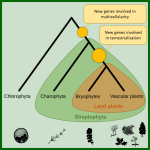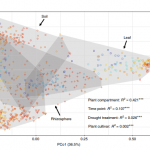From population to production: 50 years of scientific literature on how to feed the world (Global Food Security)
 Tamburino et al. analyzed text from more than 12,000 research articles published in the past 50 years that included the terms “global” or “world” and “food supply”, “food demand’, or “zero hunger”. From this dataset, they quantified terms related to population, total food production, or per-capita demand (e.g., through different types of diets). Across this time span, the authors found a trend for a decreasing focus on population size, and an increasing focus on how to increase food production. Speculating on the cause of these trends, the authors suggest that framing food security in terms of population is politically sensitive, disproportionally blames developing countries, and raises the possibility of coercion as in the one-child policy of China. Furthermore, economic development is already promoting a decrease in rate of population growth. Yet, the authors point out that trends in food production increases suggest they are not great enough to meet demands, particularly with rising levels of meat consumption and the threats of climate change. The authors propose a renewed focus on per capita consumption and research that addresses all three factors at the same time. (Summary by Mary Williams) Global Food Security 10.1016/j.gfs.2019.100346
Tamburino et al. analyzed text from more than 12,000 research articles published in the past 50 years that included the terms “global” or “world” and “food supply”, “food demand’, or “zero hunger”. From this dataset, they quantified terms related to population, total food production, or per-capita demand (e.g., through different types of diets). Across this time span, the authors found a trend for a decreasing focus on population size, and an increasing focus on how to increase food production. Speculating on the cause of these trends, the authors suggest that framing food security in terms of population is politically sensitive, disproportionally blames developing countries, and raises the possibility of coercion as in the one-child policy of China. Furthermore, economic development is already promoting a decrease in rate of population growth. Yet, the authors point out that trends in food production increases suggest they are not great enough to meet demands, particularly with rising levels of meat consumption and the threats of climate change. The authors propose a renewed focus on per capita consumption and research that addresses all three factors at the same time. (Summary by Mary Williams) Global Food Security 10.1016/j.gfs.2019.100346









